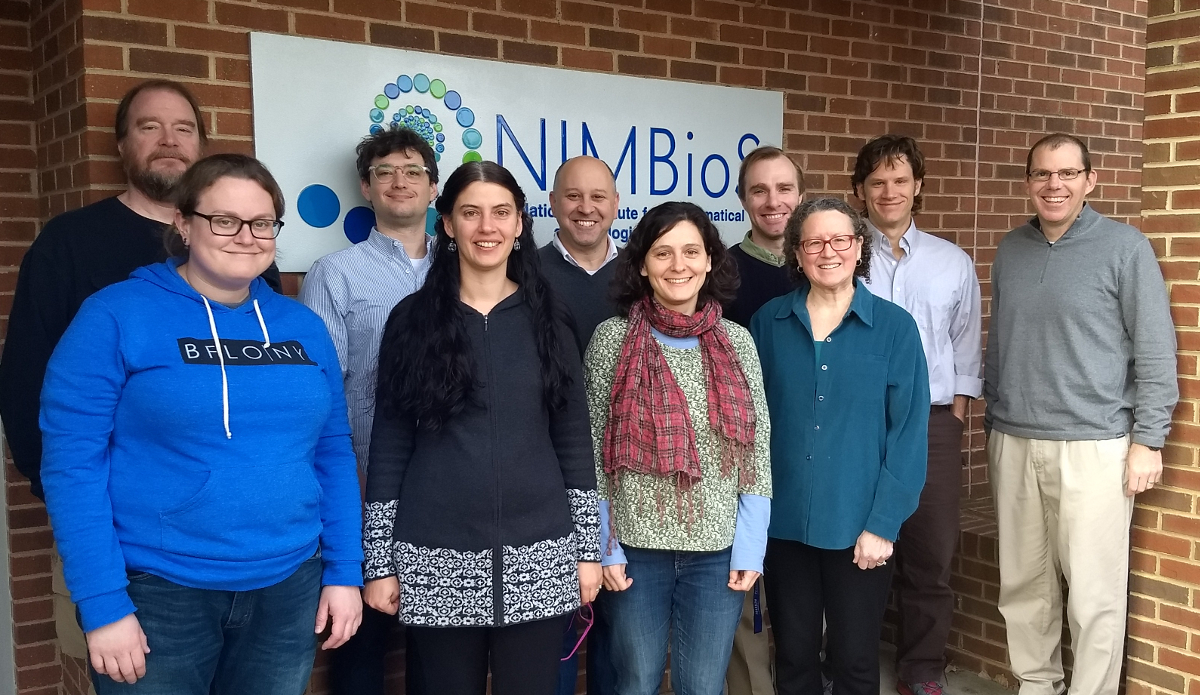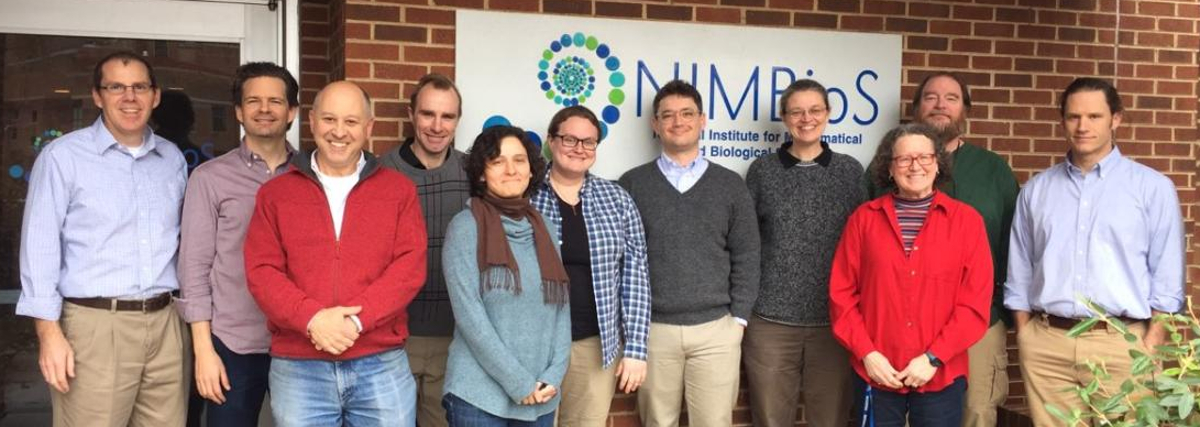| Description | Participants | Summaries | Products |
|---|

NIMBioS Working Group:
Ecosystem Federalism
Topic: Ecosystem Federalism: Building theoretical and data-analytic foundations for designing adaptive regulatory institutions for the provision of ecosystem services
Meeting dates: June 28-30, 2017; January 24-26, 2018; December 10-12, 2018
Organizers:
- Julie Blackwood, Mathematics and Statistics, Williams College, Williamstown, MA
- Charles Sims, Economics, Univ. of Tennessee; Howard H. Baker Jr. Center for Public Policy, Knoxville
Objectives: The characterization of problems and solutions in managed ecosystems is often guided by the current allocation of regulatory authority between different levels of government. For instance, in the United States, it is common for federal agencies to set minimum standards for ecosystem protection while states and local governments are charged with identifying the policy or set of policies that will best meet those standards. This group will explore mathematical, control/optimization, game theoretic, and econometric frameworks and tools that can be used to determine how regulatory authority over ecological outcomes should be allocated between a central (federal) government and local (state, municipal) governments. Our goal is to develop novel mathematical, statistical, and computational methods that incorporate optimal strategic, adaptive management of ecosystem services at multiple interacting levels of government. The group is co-sponsored and partially supported by the Howard Baker Center for Public Policy at the University of Tennessee.

Meeting Summaries
| Mtg # | Dates | Agenda | Summary | Photo | Evaluation |
|---|---|---|---|---|---|
| 1 | Jun 28-30, 2017 | Link | Link | Report | |
| 2 | Jan 24-26, 2018 | - | TBA | Link | - |
| 3 | Dec 10-11, 2018 | Link | Link | TBA |
Meeting 1 Summary. This working group spent the first day familiarizing the participants with the concept of environmental federalism that originated from the environmental economics literature. Through discussion of the pros and cons of centralized and local management, some terminology and motivation for various arguments were introduced. We also discussed how the environmental federalism could be expanded to consider the appropriate level of regulatory authority for the conservation of ecosystems and new arguments that may arise in the context of managing ecological systems that were absent in the existing literature on pollution control. Two short kickoff talks related to spatial-dynamic modeling and adaptive management were given to address two of the most prominent arguments for and against environmental management at the federal level. The group then formed two breakout groups to discuss the role of dispersal and learning (gaining knowledge of some parts of the system over time) in the environmental federalism debate. Simple mathematical models were developed to address these arguments as well as a series of modeling scenarios that could be used to analyze the validity of arguments for and against centralized environmental management. The meeting concluded with a discussion of possible case studies and modeling frameworks that would allow for more integration of data and empirical evidence.
Meeting 3 Summary. This working group meeting was spent advancing the work of the three subgroups that were formed since the end of the last working group meeting. The first subgroup worked on further developing metrics for evaluating winners and losers that arise from central and decentral management of natural resources. The second subgroup focused on transferring lessons learned from the environmental federalism literature to the management of invasive pests and diseases. These two subgoups utilized similar spatial-dynamic models mathematical models in which species/pests and disease move between patches based on the abundance of a species/pest in a patch or the movement of individuals that could serve as vectors for disease. The third subgroup advanced a framework for quantifying the value of information created when states serve as laboratories for ecological management. This subgroup utilized a variety of adaptive management models in which knowledge of various policy attributes are learned over time and this learning spillover to other management entities. The majority of the meeting was devoted to subgroup breakouts to allow time for the groups to develop and finalize any plans to continue work after the last working group meeting. The last part of the meeting was devoted to discussing key components of a synthesis paper geared for Science.
 |
| Meeting 1 participants (L to R): Michael Neubert, Julie Blackwood, Abdul-Aziz Yakubu, Mona Papes, Ben Fitzpatrick, Suzanne Lenhart, David Kling, Jim Sanchirico, Bistra Dilkina, Paul Fackler, Charles Sims. Not pictured: Cynthia Lin Lawell, Katriona Shea, Michael Springborn |
 |
| Meeting 2 participants (L to R): Ben Fitzpatrick, Julie Blackwood, David Kling, Bistra Dilkina, Michael Neubert, Mona Papes, Suzanne Lenhart, Paul Armsworth, Charles Sims, Jim Sanchirico. (Katriona Shea, Michael Springborn, and Abdul-Aziz Yakubu participated virtually.) |
 |
| Meeting 3 participants (L to R): Jim Sanchirico, Michael Springborn, Michael Neubert, Paul Armsworth, Mona Papes, Julie Blackwood, David Kling, Katriona Shea, Suzanne Lenhart, Ben Fitzpatrick, Charles Sims. (Bistra Dilkina and Aziz Yakubu participated remotely.) |
NIMBioS Working Groups are chosen to focus on major scientific questions at the interface between biology and mathematics. NIMBioS is particularly interested in questions that integrate diverse fields, require synthesis at multiple scales, and/or make use of or require development of new mathematical/computational approaches. NIMBioS Working Groups are relatively small (up to 10 participants), focus on a well-defined topic, and have well-defined goals and metrics of success. Working Groups will meet up to 3 times over a two-year period, with each meeting lasting up to 2.5 days.
A goal of NIMBioS is to enhance the cadre of researchers capable of interdisciplinary efforts across mathematics and biology. As part of this goal, NIMBioS is committed to promoting diversity in all its activities. Diversity is considered in all its aspects, social and scientific, including gender, ethnicity, scientific field, career stage, geography and type of home institution. Questions regarding diversity issues should be directed to diversity@nimbios.org. You can read more about our Diversity Plan on our NIMBioS Policies web page. The NIMBioS building is fully handicapped accessible.
NIMBioS
1122 Volunteer Blvd., Suite 106
University of Tennessee
Knoxville,
TN 37996-3410
PH: (865) 974-9334
FAX: (865) 974-9461
Contact NIMBioS


